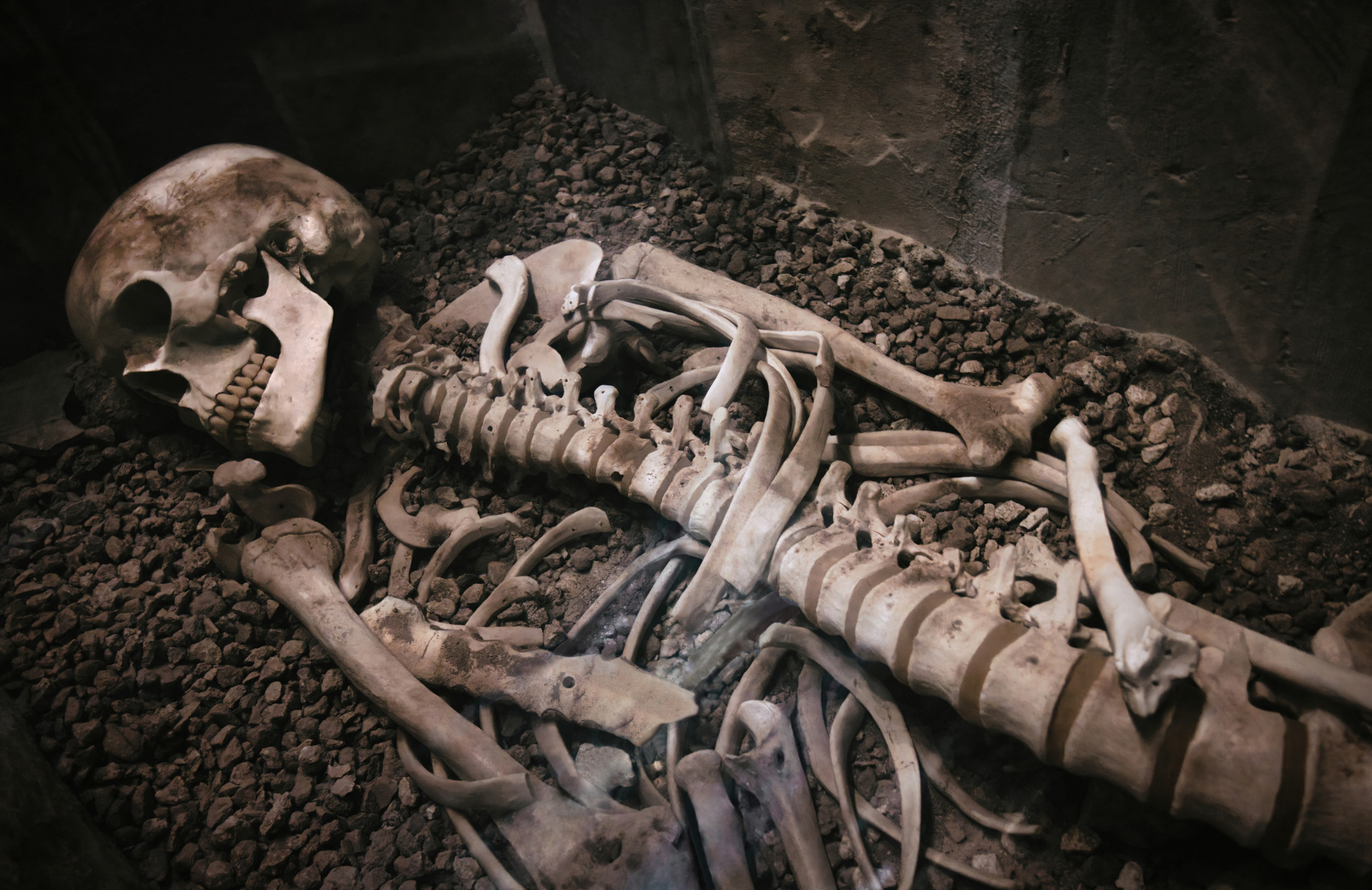The intact remains of eight medieval nobles have been discovered during restoration works at a monastery in northeastern Spain.
A team of researchers made the "exceptional discovery" at the Gothic cloister of the Royal Monastery of Santes Creus in Tarragona, part of the autonomous community of Catalonia, the region's Department of Culture and the not-for-profit "La Caixa" banking foundation announced in a press release.
The Gothic cloister, in the municipality of Aiguamúrcia, has been undergoing restoration works, but the discovery of the intact royal burials was "totally unexpected," bringing to light an unusual funerary complex, according to the release.
The research team, made up of archaeologists, anthropologists, restorers and other specialists, found the intact skeletons inside the sarcophagi of the cloister's north gallery. These sarcophagi correspond to members of the Catalan nobility from the 13th and 14th centuries who were buried there.
Prior to opening the tombs, experts suspected that they had already been looted, based on existing documentation.
The discoveries came last October during work to dismantle the sarcophagi as part of the restoration effort. They are all quite uniform in style, featuring decorations indicating the noble families that they belonged to.
The various medieval burials were found in a very good state of conservation, according to the researchers. In fact, it appears that the sarcophagi had not been opened since the last time the bodies were placed in them. Some remains of textiles were preserved around the skeletons.
The researchers were able to extract samples from the textile, tissue and bone remains, the analysis of which will provide valuable information about the eight buried individuals.
The finds are "exceptional" given the social class of the deceased individuals and the fine state of conservation of both the human remains and the textiles, according to the researchers.
In addition to the restoration work, the research team has also initiated a study with the aim of determining as accurately as possible the potential identities of the buried nobles. This study will also hopefully shed light on their living conditions, diet, any health problems they suffered and other aspects of their daily life. Historical research is being carried out in parallel.
Together, the investigations could shed light on the burial practices and funerary rituals of the medieval Catalan nobility.

 www.newsweek.com
www.newsweek.com
A team of researchers made the "exceptional discovery" at the Gothic cloister of the Royal Monastery of Santes Creus in Tarragona, part of the autonomous community of Catalonia, the region's Department of Culture and the not-for-profit "La Caixa" banking foundation announced in a press release.
The Gothic cloister, in the municipality of Aiguamúrcia, has been undergoing restoration works, but the discovery of the intact royal burials was "totally unexpected," bringing to light an unusual funerary complex, according to the release.
The research team, made up of archaeologists, anthropologists, restorers and other specialists, found the intact skeletons inside the sarcophagi of the cloister's north gallery. These sarcophagi correspond to members of the Catalan nobility from the 13th and 14th centuries who were buried there.
Prior to opening the tombs, experts suspected that they had already been looted, based on existing documentation.
The discoveries came last October during work to dismantle the sarcophagi as part of the restoration effort. They are all quite uniform in style, featuring decorations indicating the noble families that they belonged to.
The various medieval burials were found in a very good state of conservation, according to the researchers. In fact, it appears that the sarcophagi had not been opened since the last time the bodies were placed in them. Some remains of textiles were preserved around the skeletons.
The researchers were able to extract samples from the textile, tissue and bone remains, the analysis of which will provide valuable information about the eight buried individuals.
The finds are "exceptional" given the social class of the deceased individuals and the fine state of conservation of both the human remains and the textiles, according to the researchers.
In addition to the restoration work, the research team has also initiated a study with the aim of determining as accurately as possible the potential identities of the buried nobles. This study will also hopefully shed light on their living conditions, diet, any health problems they suffered and other aspects of their daily life. Historical research is being carried out in parallel.
Together, the investigations could shed light on the burial practices and funerary rituals of the medieval Catalan nobility.

Intact bodies of medieval nobility discovered during monastery restoration
The intact remains of the eight deceased nobles were found inside sarcophagi that had not been opened for centuries.

